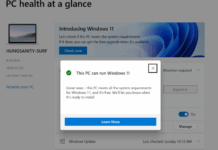It can be worrisome for parents when their child develops a rash, as it could indicate measles, chickenpox, or simply an allergic reaction. These conditions share similar symptoms, which can make it challenging for parents to determine the exact cause without a proper diagnosis. So, how can one distinguish between these conditions with the naked eye?
Let’s explore the distinctive signs of each condition to enable you to identify and promptly address them:

Signs and Symptoms of Measles
Measles is a highly contagious disease caused by a virus, commonly affecting children who have not been vaccinated. It typically presents with initial symptoms such as high fever, cough, runny nose, and red eyes, followed by the appearance of a characteristic rash. This rash typically appears in stages, starting from the face and then spreading downward to the neck, torso, and eventually the arms and legs.
According to pediatric expert, Dr. Nguyen Thi Lan, from the National Pediatric Hospital, “The rash associated with measles tends to appear in clusters, displaying a deep color, and is typically non-itchy. Importantly, these rashes do not blister, which is a key differentiator from chickenpox. Additionally, measles may also cause eye inflammation, along with coughing and a runny nose.”
Signs and Symptoms of Chickenpox
Chickenpox, caused by the varicella-zoster virus, is another common childhood infection. One of its most recognizable signs is the appearance of fluid-filled blisters on the skin. Initially, these blisters appear as small, red spots, which then develop into itchy blisters. They can appear anywhere on the body, from head to toe, and may cause discomfort, especially when they rupture.
Dr. Mai Thi Thanh, a pediatrician at Bach Mai Hospital, advises, “In the case of chickenpox, these blisters may appear in waves, starting as red spots and then progressing to blisters. This is a hallmark sign of chickenpox that parents should be aware of. Additionally, children may experience mild fever and fatigue.”
What do Allergic Reactions Look Like?
Allergic reactions occur when the body’s immune system responds to foreign substances such as food, medication, weather changes, or pollutants. While allergic reactions can cause a rash that may resemble measles or chickenpox, there are key differences. These rashes do not progress to blisters and are not accompanied by eye inflammation, coughing, or a runny nose, as seen in measles.
Allergic rashes tend to be itchy and may spread widely or appear randomly across the body. Other symptoms of an allergic reaction can include swelling in areas such as the lips and eyes, and in severe cases, difficulty breathing.
“Allergic reactions can lead to red, itchy skin, but they lack the characteristic development seen in chickenpox or measles,” explains Dr. Nguyen Lan Anh, a dermatologist at Cho Ray Hospital. “Typically, these rashes are not associated with inflammation or fever. When itching and other allergy symptoms occur, it’s important for parents to identify the allergen and take appropriate measures to manage the reaction.”
4. How to Distinguish Between These Conditions
To differentiate between measles, chickenpox, and allergies, parents should pay attention to the following characteristics:
Measles: The rash appears in stages, is typically non-itchy, and is accompanied by high fever, cough, runny nose, and eye inflammation.
Chickenpox: Small, fluid-filled blisters appear randomly on the skin, causing itching, and may rupture, forming crusty sores.
Allergic Reactions: Red, itchy rashes appear immediately after exposure to an allergen, without blisters, and may be accompanied by swelling but not fever or other symptoms.
When to Seek Medical Attention
Regardless of whether it is measles, chickenpox, or an allergic reaction, if your child’s condition does not improve within a few days or exhibits severe symptoms such as high fever, fatigue, or difficulty breathing, it is crucial to seek medical attention promptly. Particularly with measles and chickenpox, timely medical care is essential to prevent complications.
While it is important for parents to be able to recognize the signs of measles, chickenpox, and allergies, it is always advisable to consult a healthcare professional when in doubt. By being vigilant and informed about these conditions, you can ensure your child receives the necessary care and avoid potential health risks.
“Building a Strong Foundation: Nurturing Children’s Health and Immunity”
Seasonal transitions are times when children are more susceptible to catching infectious diseases. But worry not, with these five simple yet powerful habits, you can boost your child’s immunity and keep them resilient against illnesses. It’s time to discover these amazing tips and keep your little one healthy!






































